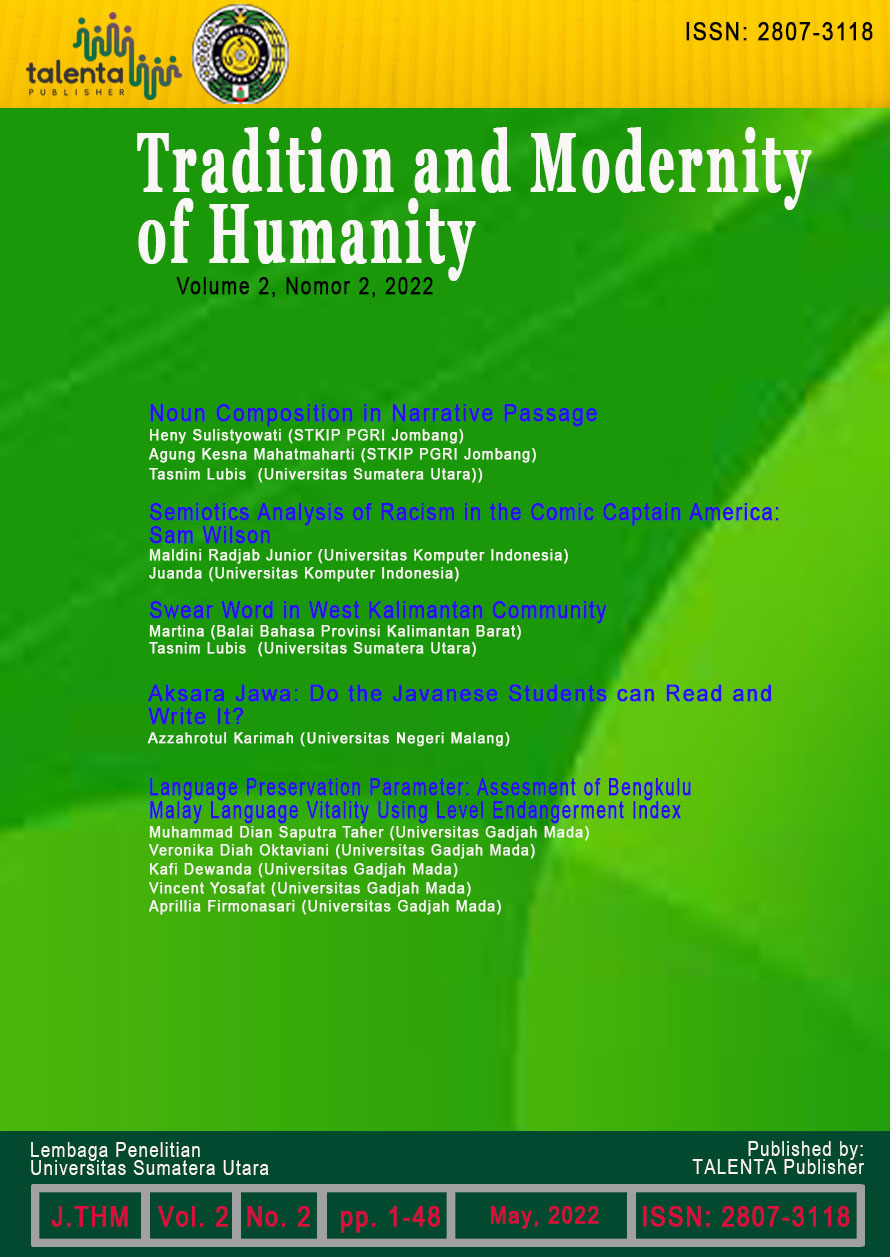Language Preservation Parameter: Assesment of Bengkulu Malay Language Vitality Using Level Endangerment Index
DOI:
https://doi.org/10.32734/tmh.v2i2.10133Keywords:
Bengkulu Malay language, LEI, language shift, preservation, vitalityAbstract
Bengkulu Malay language began to be put away and displaced by other languages so efforts were needed to preserve the language in order to survive. The first step was to take measurements through language life force assessment based on the Level Endangerment Index (LEI). The purpose of this research was to identify the form of language shift, analyze the level of language vitality, and explore language defense strategies as an effort to preserve the Bengkulu Malay language. This research used Level Endangerment Index theory, language shift, and language preservation. The methods used in this research were anthropology and sociolinguistics through interviews, questionnaires, observation, and study literature. Data analysis was carried out with sequential explanatory mixed method including Level Endangerment Index assessment, data reduction, data serving, data verification, and conclusion. The result of this research was the form of Bengkulu Malay language shift in the form of code switching and code mixing. Language shift spreads through community, style of language, and vocabularies in families, educational institutions, and immigrant neighborhood. Bengkulu Malay language vitality is 44% which means endangered. Language preservation efforts are carried out by involving the government, the Customary Council, and the community.
Downloads
Downloads
Published
Versions
- 2023-11-21 (2)
- 2022-05-21 (1)
Issue
Section
License
Copyright (c) 2022 Tradition and Modernity of Humanity

This work is licensed under a Creative Commons Attribution-ShareAlike 4.0 International License.






